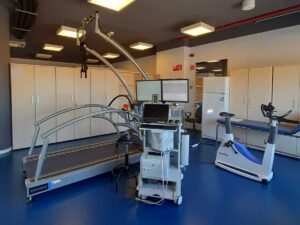Introduction
WB-EMS is a time efficient technology and also physically less stressful that positively affects muscle mass, fat mass and functional capacity generating high adherence in subjects no athletes. The objective of the study was to determine the effect of WB-EMS women with sarcopenic obesity with and without protein supplementation.
Method
67 women with high fat percentage and low muscle mass were divided into three groups:
- WB-EMS (n=24).
- WB-EMS + protein supplementation (n=21).
- Control group (n=22).
The groups with WB-EMS made slight movements (flexion of legs and arms performing extension during the impulse phase) once a week. A WB-EMS protocol was applied with a bipolar current of 85 Hz frequency, a pulse width of 350 us with a duty cycle of 6 seconds and 4 seconds rest intermittently. The duration of the session was progressive increasing up to 20 min after 8 weeks.
The Borg CR10 scale (RPE) protocol was used to calculate the intensities.
Results
As for the significant reduction in body fat, it only had a positive impact on the WB-EMS + protein supplementation group.
Muscle mass was significantly increased in both groups with WB-EMS. However, it was reduced in the control group.
Conclusion
The effect of WB-EMS gives positive effects on the increase of muscle mass in women over 70 years with a percentage of high fat mass and low muscle mass. Therefore, we can say that WB-EMS is an effective and safe tool for increasing muscle mass in women over 70 with sarcopenic obesity.
Bibliography
Katharina Wittmann., Cornel Sieber., Simon von Stengel., Matthias Kohl., Ellen Freiberger., Franz Jakob., Michael Lell., Klaus Engelke and Wolfgang Kemmler. Impact of whole body electromyostimulation on cardiometabolic risk factors in older women with sarcopenic obesity: the randomized controlled FORMOsA-sarcopenic obesity study. Clinical Interventions in Aging. 2016:11 1697–1706.







